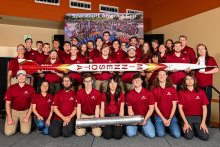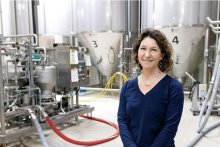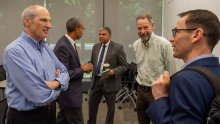News

Researchers develop state-of-the-art device to make artificial intelligence more energy efficient
Posted
Engineering researchers at the University of Minnesota Twin Cities have demonstrated a state-of-the-art hardware device that could reduce energy consumption for artificial intelligent (AI) computing applications by a factor of at least 1,000.

University of Minnesota co-leads new national center to accelerate urban stormwater research and technical assistance
Posted
A University of Minnesota Twin Cities team is co-leading a new center funded by the United States Environmental Protection Agency (EPA) aimed at enhancing efforts to support the nation’s water infrastructure and protect water quality.

Professor Bharat Jalan named 2024 American Vacuum Society Fellow
Posted
University of Minnesota Twin Cities College of Science and Engineering Professor Bharat Jalan was named an American Vacuum Society (AVS) Fellow.

Research Infrastructure Investment Program awards over $5 million
Posted
The University of Minnesota Research and Innovation Office has awarded $2.6 million to 13 projects as part of the 2024 Research Infrastructure Investment Program, including five projects that will benefit researchers in the College of Science and Engineering.

Minnesota Nano Center plays key role in national security workforce program
Posted
The University of Minnesota recently hosted academic, business, and government leaders to launch the University’s participation in a new workforce development program sponsored by the Department of Defense.

Four new CSE department heads begin in 2024-25
Posted
University of Minnesota CSE Dean Andrew Alleyne has named four new department heads in the college who bring a wealth of academic, research, and leadership abilities to their departments.

UMN Rocket Team defends title, wins 30,000-ft category at 2024 Spaceport America Cup
Posted
The student-run University of Minnesota Rocket Team launched their rocket nearly 30,000 feet to take first place in one of the most challenging categories at the 2024 Spaceport America Cup.

Expert Alert: Dam in southern Minnesota in danger of “imminent failure” due to flooding
Posted
Severe flooding in southern Minnesota has put the Rapidan Dam near Mankato in an "imminent failure condition," according to officials in Blue Earth County. Civil engineering professor John Gulliver speaks on how extreme storms are impacting man-made infrastructure.

Energy drink: What can you do with wastewater from brewing beer?
Posted
Paige Novak, head of the Department of Civil, Environmental, and Geo- Engineering at the University of Minnesota, and her team are exploring whether the carbon in a brewery's wastewater could be recovered and turned into something useful.

CSE Professor Steven Koester named UMN's first chief semiconductor officer
Posted
The University of Minnesota named Steven Koester as its first Chief Semiconductor Officer and launched a website devoted to the University’s semiconductor and microelectronics research and education.
